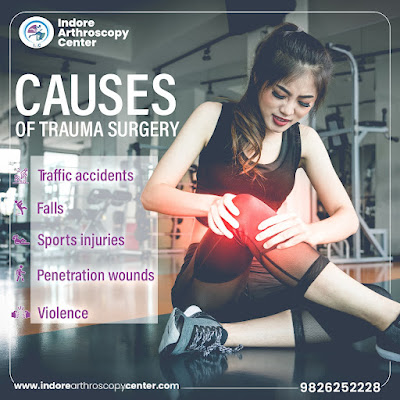INTRODUCTION - Osteoporosis is one of the most commonest metabolic diseases of the bone which is seen in human beings, generally osteoporosis is characterized by a diffused reduction in the bone density that is due to the decrease in the bone mass. Osteoporosis basically happens when the rate of bone reception exceeds the rate of formation of the bones. Osteoporosis is the reduction of bone tissue density that can increase the chances of its suspectibility to fracture and dislocations, the most common technique or scam that indicate when osteoporosis is present is the bone mineral density examination or dual energy x-ray absorptiometry.
Classification of Osteoporosis
Osteoporosis can be further classified into
1) Primary and the rare forms of osteoporosis- the first one is primary or involutional osteoporosis in which the underline cause can't be identified,
2) secondary osteoporosis - the second one is in which the underline cause is known, general causes of secondary osteoporosis include hyperthyroidism, hypergonadism, Cushing syndrome and corticosterioids. There are some rear form of the disease which can be related to pregnancy or Juvenile osteoporosis.
Causes of osteoporosis
There can be several etiological factors that can cause osteoporosis, some of the most common causes include -
- Prolonged bed rest due to cases of paralysis,
- Rheumatoid arthritis
- People of older age
- Complete immobilization of the extremity or the whole body can lead to osteoporosis,
- Calcium or protein deficit diet
- Malignancy or in case of bone tumors
- Over consumption of drugs
- Alcoholism
- Liver cirrhosis
Clinical features
The most common sites that get affected either by a fracture or any dislocations after osteoporosis are hip spine and waste in which the hip and spine fractures can make the patient in the fully dependent state and better return for life, according to resources women are more likely to get osteoporosis than men. Some of the most common findings that are very consistent with the diagnosis of osteoporosis are:-
- Cervical compression
- Loss of vertical height of the vertebra that can be due to collapse
- Brittle hairs
- Back pain
- Multiple fractures specially with the minor trauma
- Compression fractures at the end of thoracic spine
- Postural changes or stooping
- Shortness of breath
Risk factors
There are number of factors that can increase the risk for developing osteoporosis, that generally include age, race, diet, medical conditions and lifestyle.
There are some of the unchandable risk of osteoporosis that are out of control these are:-
1) Age- Along with the increase in age the risk of osteoporosis are greater, osteoporosis mainly happens in old ages.
2) Race- the race include Asian people and white people they are at a more higher risk of osteoporosis. You're at greatest risk of osteoporosisif you're white or of Asian descent.
3) Family history- family history or any past history of osteoporosis in parents or siblings generally increases the risk of osteoporosis.
4) Body frame- It is seen that people who have small body frames are at higher risk of osteoporosis due to the less bone mass and decreased bond density along with the age
5) low calcium intake- not getting enough amount of calcium can lead to weakening of bones as the calcium is the main component that enhance is the bone density.
6) Eating disorders - certain eating disorders are being underweight due to lack of proper nutrition the weakening of bone occurs which can cause osteoporosis.
Prevention
Maintaining a healthy life getting good nutrition and regular exercising play an essential role for keeping the bones healthy and helps the body from preventing conditions like osteoporosis. Certain prevention tips include:-
1) Calcium intake - the normal suggested those for men and women between the age of 18 and 50 is 1000 mg a day. This amount can very an increase to 1200 mg per day as the age increases. Getting proper amount of calcium can help to increase the bone density and to keep the bones healthy.
Good sources of calcium include:
- Dairy products specially low fat
- Green leafy vegetables
- Soya products like tofu
- Salmon fish
- Eggs
- Cereals and juices
It is suggested to consider a calcium supplement if the calcium intake is not completed from the diet, also while taking calcium supplement always consult a physician as over intake of calcium can lead to kidney stones.
2) Exercise - Exercises play a major role in building strong bones and can help to decrease the risk of bone loss. Starting exercise in at any age can help you to gain the most benefits not only up to the Bony extent but will benefit to the whole body. Try to combine strength training exercises with brisk walking lightweight bearing and balancing exercises, strength training can help to strength in muscles and bones of the arms legs and spine. While the weight bearing exercises like jogging running skipping rope swimming can play a immense rule in strenging of the lower back and the legs.
3) Quit alcohol and smoking - Consuming alcohol and smoking can lead to beginning of bones and degrade the internal organs of the body which ultimately leads to osteoporosis, quit alcohol and smoking and tobacco chewing as this can be life threatening.
Are you looking for
Best ortho clinic near me in Indore, book your appointment with Indore Arthroscopy Centre. We provide Arthroscopic Knee Surgery in Indore at very affordable cost. We have a team of highly experienced orthopedic surgeon in Indore.
Please go visit our social media :
Please do follow on Instagram



Comments
Post a Comment